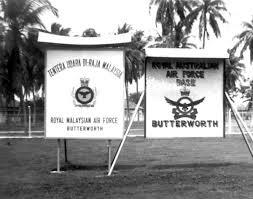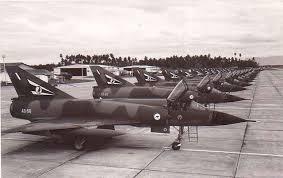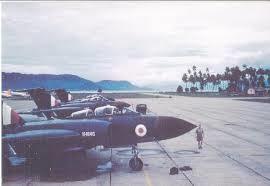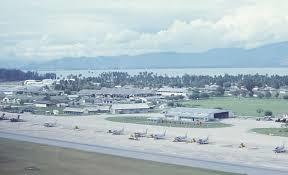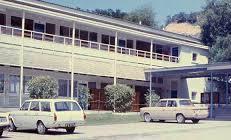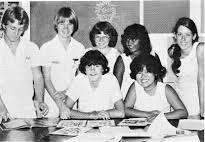PENANG STORIES
The Existence of the RAAF in Penang
The
Royal Malaysian Air Force (RMAF) is based in Butterworth on the North West
coast of Malaysia, on the mainland of Penang. Officially opened in October
1941, it was then named RAF Butterworth, serving as a Royal Air Force station.
It served as a part of the British defence plan to defend the Malayan Peninsula
against an imminent threat of invasion by the Imperial Japanese forces during
World War II.
Despite that, the RAF airfield was subsequently captured by units of the
advancing 25th of the Imperial Japanese Army on 20 Dec 1941 and the control of the airbase remained in the
hands of the Imperial Japanese Army until the end of hostilities in Sept 1945.
Then, the RAF resumed control of the station where along with Royal Australian
Air Force (RAAF) and Royal New Zealand Air Force (RNZAF) were stationed during
the Malayan Emergency (1948 - 1960).
At that point, the station also served as a vital front-line airfield for various
other units on rotation from Royal Air Force Changi, Royal Air Force Kuala
Lumpur, Royal Air Force Kuantan, Royal Air Force Selatar and Royal Air Force
Tengah. The base was also used by RAF aircrafts as a transit point to and from
other RAF bases in the Far East region (including Singapore, North Borneo and
Hong Kong), connecting them between RAF stations in the Indian Ocean, Middle
East and Mediterranean regions.
The
RAF Station in Butterworth was closed in 1957. It was then transferred to be
the base of RAAF and promptly renamed as RAAF Station Butterworth. From then
on, it became home to numerous Australian fighters, and bomber squadrons who
were stationed in Malaya during the Cold War era.
There was a problem in the build up of the RAAF operational units in Malaya
initially, with a shortage of people and units, and with the deployment of
squadrons overseas and in Japan, Korea and Malta. These forces later returned
to Australia at the end of 1954. Due to the change of circumstances, RAAF
planners were encouraged to think more along the lines of a composite wing for
Malaya, which was to include a headquarters, one bomber squadron, one fighter
squadron, a base squadron for administrative and logistical support and a
maintenance squadron. The base’s population of the operational units at
Butterworth grew to about 1900 servicemen, both from RAAF and RMAF, and some
1400 Malayan civilians. For the RAAF, this signifies a productive and happy association
with Malaya.
With strong colonial legacy in the 1950s and 1960s, young RAAF officers and
their wives had a fairly high standard of living. They could enjoy a
first-class passage to Malaya on a cruise ship, indulge in cocktail meetings
and dress formally for dinner functions. Penang was an exotic home to many air
force families, and a number of them lived in tropical bungalows on the Island.
The stylish mixture of Asian and British colonial architecture, a potpourri of
races, the tropical vegetation and climate, delectable Asian food and a
duty-free port filled with merchant shops from all parts of the world
contributed in making Penang a well-enjoyed home to the officers.
In addition, RAAF officers based in Malaya were awarded generous allowances
which included up to three servants per household. Having adapted and making
Penang their home, the RAAF officers and their families settled into a
lifestyle based on work for the men and social activities at the tennis club,
the Penang Swimming and Golf Clubs also the Runnymede and Eastern and Oriental
Hotels.
RAAF School
With increasing numbers of RAAF officers moving to the base in Penang, the need
for provision of medical services, married quarters and schooling was evident.
This was then put into place from mid 1950s onwards. In Oct 1958, the
Department of Air established a permanent school at number 8 Residency Road in
Penang Island, catering to the end of year eight. Teaching staff for the school
were selected from the Department of Education of New South Wales and Victoria.
Additionally, number 4 Residency Road was leased for an infants’ department.
The number of enrolments rose to a total of 289 infants and 345 primary-age
students. Eventually, number 10 Residency Road was also leased to house 102
secondary students. With enrolments consistently increasing at the Residency
Road schools, causing inadequate and crowded conditions, a bigger school was
needed.
The RAAF School on Jalan Azyzeat Hillside Penang was completed on 30 Mar 1962
and officially declared open on 9 May 1962. When the school was built, there
were three main buildings, an assembly hall and an attap hut for infants. In
Sept 1965, a new attap was built for primary students. By 1977, student numbers
increased to over a thousand. The school continued to expand as the number of
students increased rapidly and reached a high of 1100 in 1977.
The RAAF School completely closed in 1988 with the high school closing at the
end of 1987 and the primary school in mid-1988. After its closure,
students attended one of the international schools in Penang, namely Uplands,
St. Christopher’s and Dalat. The RAAF School building remained, and is now used
as the RMAF training facility and administration centre.
RAAF Club
The RAAF Club at 10 Tanjung Tokong in Penang came into place in January 1962
with its main purpose to cater to the social and sporting life of the families
of RAAF officers during their stay in Malaysia. The centre originally operated
as a hostel with a total of 72 rooms. During peak times, the club provided
recreational, sporting and general meeting facilities for over 800 families.
The RAAF Club, situated within easy access of RAAF families living in Penang,
stood as a mini self-contained community and functioned as a meeting place for
friends and a club that offered excellent facilities for enjoyment. The
facilities of the club were specially catered to all RAAF members, Australian
government public servants and their dependants, where recreational and sporting
amenities were primarily for airmen.
There were more to the RAAF Club, namely the Penang Health Centre, Penang
Housing Section, the chaplains, RAAF police, transport office, post office,
Supervisor RAAF Centre and the Public Health Section. These were facilities
available for the benefit of members. The Department of Defence assumed full
responsibility for provision of health care for all service personnel and their
families, and the Penang Health Centre came as a convenience to the residents
in Penang. Convenience store, barber and hairdresser, gift shop, library and a
travel bureau were also within access to the members.
The main focus of the RAAF Club was to provide social activities and
entertainment to the officers and their families. Much effort was put in to
ensure the club was a pleasant place to visit and to spend time. In the 1980s,
the number of Defence Force personnel reduced and led to the closure of the
RAAF Club. A new and smaller RAAF Club was later established for the use of
families who lived permanently in Penang.
Image and content credit:
www.raafschoolpenang.com, www.raafaact.org.au, rentaka.weebly.com
